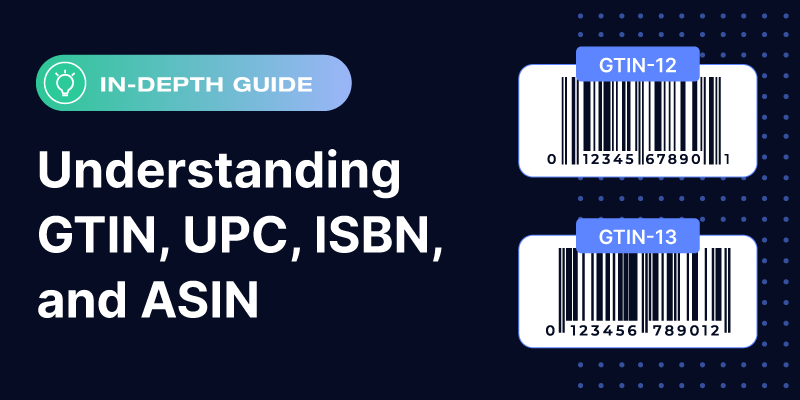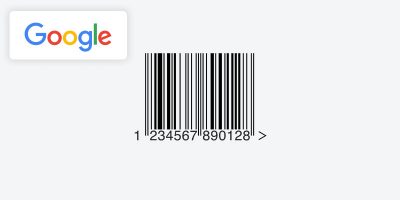
If you’re unfamiliar with the terms, you probably find yourself typing “GTIN vs UPC” or “ASIN vs UPC vs EAN” in the search box often, as you try to make sense of the mess of acronyms you run into as an ecommerce seller. If this is the case for you, keep reading to put your confusion to rest.
What is a GTIN?
GTIN stands for Global Trade Item Number. This GTIN encompasses a family of data structures that companies use to uniquely identify their products or services for purchase. The number that is encoded into a barcode is the GTIN.
However, there are different kinds of GTINs or barcodes with more specific names, depending on how they’re formatted. These include UPC (Universal Product Code), EAN (European Article Number), and ISBN (International Standard Book Number). Learn about the differences between them below.
- The GTIN-12 is synonymous with UPC and used in the United States and Canada as a 12-digit barcode.
- The GTIN-13 is synonymous with EAN and is primarily used outside the United States and Canada.
- The ISBN is a unique commercial book identifier barcode. Each ISBN uniquely identifies a book and has either 10 or 13 digits. All ISBNs assigned after January 1, 2007, have 13 digits. Typically, the ISBN is printed on the back cover of the book.
What is an ASIN?
An ASIN or Amazon Standard Identification Number is a unique block of 10 letters and/or numbers that identifies an item on Amazon. For books, the ASIN is the same as the ISBN, but for all other products, a new ASIN is created when the item is first uploaded to Amazon’s marketplace. The same product sold by different sellers has the same ASIN and product detail page.
If you’re wondering how to get an ASIN for Amazon, you need to know your product’s GTIN. You can search on Amazon for a GTIN and then look at the product detail page to see its corresponding ASIN. Amazon uses these universal product identifiers to create or match existing ASIN codes.
Why do I need GTIN and UPC codes for my product listings?
GTIN and UPC codes are becoming attributes that more and more marketplaces and price comparison channels require in product feeds.
Why? The answer is simple. Rather than create a new listing on a marketplace like Amazon or Walmart, UPC codes allow a marketplace to recognize that multiple merchants are selling the exact same product and group listings together for ease of discovery by shoppers.
Feedonomics can help send the correct GTIN and UPC fields to all of your marketing channels and marketplaces. Learn more here.

With its leading data feed management platform, Feedonomics helps brands, retailers, and agencies optimize and list products on hundreds of shopping destinations around the world. Learn more about our full-service solutions for advertising channels and marketplaces.
